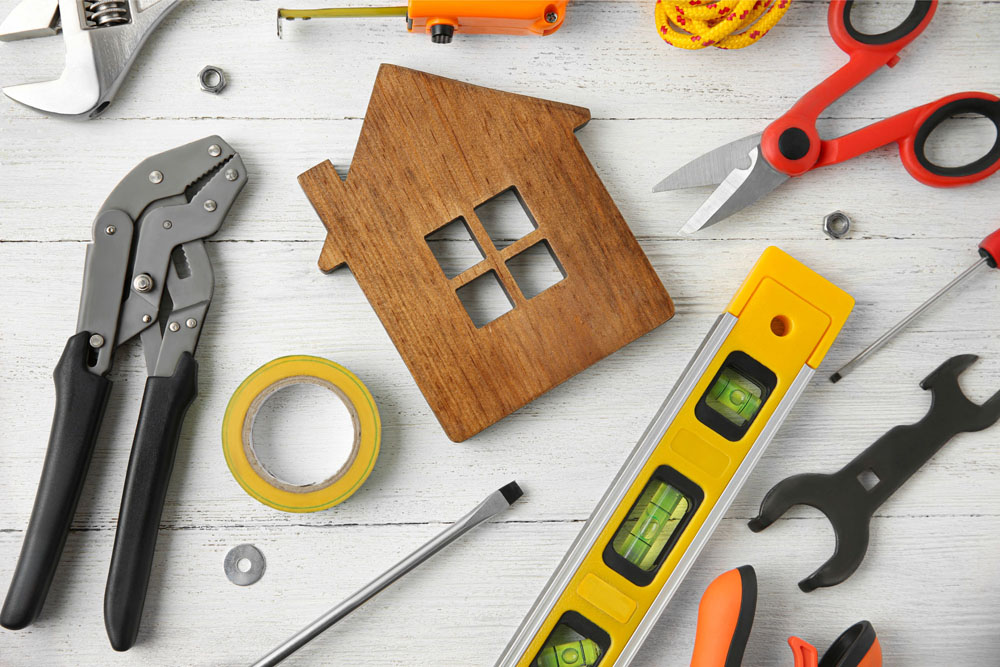Dear Maintenance Men
By Jerry L’Ecuyer & Frank Alvarez
Dear Maintenance Men,
I have a 30-year-old flat roof on my apartment building and have been chasing leaks for the last few years. I’ve patched here and there, and my roof is not that bad. I’m dreading the tear off process, cost of a new roof and inconvenience to my residents.
Should I just keep patching and hope for the best?
Watson
Dear Watson,
You are not alone. Many apartment building owners share your dread for exactly the same reasons including the liability associated with the tear off and installation process. We agree, chasing a mystery leak on a flat roof system is not fun especially in the rain!
We have literally saved hundreds of existing roofs and thousands of dollars using “cool roof”, elastomeric acrylic or siliconized roof coating systems. These systems are very easy to apply over existing roofing systems. Primarily, we use them over typical commercial rolled roofing systems, but it can be applied over countless materials due to its adhesive properties.
We recommend a visit with a qualified roofing specialist who can assess the existing roofing and determine if your roof condition qualifies for a roof coating vs replacement. Most roofs will need to be patched in several areas of concern prior to application of the coating to ensure a waterproof, structurally sound substrate.
The process is very simple,
1. Power wash, degrease, and allow the roof to dry.
2. Patch and repair any problem areas. Apply elastomeric or manufacturer recommended caulk to all seams, corners, and other lap areas.
3. Using a blower, blow off any residual dust and debris.
4. Following the selected product specifications, apply the required primer to your newly prepped surface.
5. Now you can brush, roll, squeegee, broom, or spray on the elastomeric roof coating.
Tip: Be sure to brush the material into every nook and cranny. Be generous with the material, however, do not apply thick coats or allow the material to pool. Use a minimum of two thin coats.
This system can be used for patching small areas or entire roof covering. The acrylic based systems are less expensive than the siliconized systems, but we recommend the siliconized systems for long term waterproofing. Ultra Siliconizer, 100% Acrylic Elastomeric White Reflective Roof Sealer products can be purchased in 1 gallon, 5 gallon, or larger commercial quantities and found at roofing supply houses and Home Depot or Lowes hardware stores.
Dear Maintenance Men:
I have heard the term Cool Roof. I have an idea what it means, but can you expand on what exactly a “Cool Roof” is or means to my property?>
Fred
Dear Fred:
As the cost of energy continues to go up, property owners are encouraged to find ways to save money on the cost of cooling their house, apartment or commercial building. Applying Cool Roof technology is a cost-effective passive way to reduce cooling costs.
A cool roof is designed to reflect more sunlight than a conventional roof, in turn absorbing less solar energy. This lowers the temperature of the building just as wearing light-colored clothing keeps you cool on a sunny day. Conventional roofs can reach temperatures of 150°F or more on a sunny summer afternoon, sun. Under the same conditions a reflective roof could stay more than 50°F cooler, reducing the thermal transfer of heat into the living space. A “Cool Roof” has the ability to shed heat or thermal emittance by giving off thermal infrared radiation.
Of course, a “Cool Roof” does have some drawbacks. A “Cool Roof” is also cool in winter, meaning the roof will transmit less heat into the living space, which may increase heating costs because of less thermal transfer.
Dear Maintenance Men:
I have installed a water softener on my property. After a few months I checked the salt level and was astonished to find the salt lever did not go down as expected. As a matter of fact, the salt level has not gone down at all. I’m confused! Is my machine super-efficient or is something wrong? To make things worse, the water is not coming out soft as expected. What did I do wrong and how do I solve this dilemma?
Todd
Dear Todd:
Water Softeners are very particular about what kind of salt is used in them. We suspect that you may have used Salt Crystals as opposed to Salt Pellets. Salt Crystals will look a little like shaved ice and Salt Pellets will look like big white horse pills. A salt system recharges itself by pumping water into the bottom of the salt tank and creating a salt brine. This process causes the salt to melt and replenish the softening properties of the water softer machine. In a normal system using Salt Pellets, the salt melts at the bottom and causes the salt in upper section of the tank to drop down and replace the melted salt until it is time to add more salt. When Salt Crystals are used, the melted salt creates a salt bridge to form, holding back the salt in the upper part of the tank. After a while, a salt void is created, and the softener is no longer recharging the system. Now the bad news! The Salt Crystals need to be removed and replaced with Salt Pellets. Now back to the really bad news: You will find the Salt Crystals have hardened to the consistency of concrete. Removing it may require a hammer and cold chisel or a small electric demolition hammer. Be careful not to punch a hole into the side of the water softener. Adding water to the tank will greatly help in breaking down the salt and aid in shoveling out the now loose salt. Once done, purchase Salt Pellets, typically found in yellow bags.
Bio:
If you need maintenance work or consultation for your building or project, please feel free to contact us. We are available throughout Southern California. For an appointment, please call Buffalo Maintenance, Inc. at 714 956-8371
Frank Alvarez is licensed contractor and the Operations Director and co-owner of Buffalo Maintenance, Inc. He has been involved with apartment maintenance & construction for over 30 years. Frankie is President of the Apartment Association of Orange County and a lecturer, educational instructor and Chair of the Education Committee of the AAOC. He is also Chairman of the Product Service Counsel. Frank can be reached at (714) 956-8371 Frankie@BuffaloMaintenance.com For more info please go to: www.BuffaloMaintenance.com
Jerry L’Ecuyer is a real estate broker. He is currently a Director Emeritus and Past President of the Apartment Association of Orange County and past Chairman of the association’s Education Committee. Jerry has been involved with apartments as a professional since 1988.









